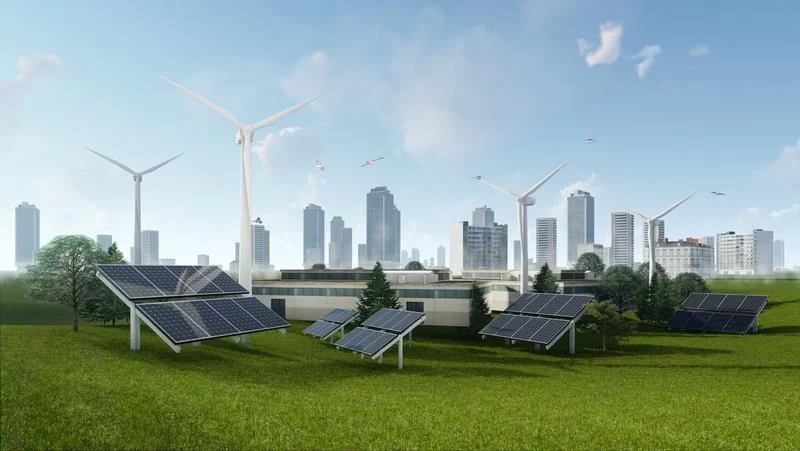A Guide to Choosing Hybrid Power Solutions for Your Needs
If you’re exploring renewable energy options, you’ve likely encountered the term hybrid power system. But what makes a hybrid power solution the right fit for your needs? In this guide, you’ll discover how hybrid power (or hybrid systems) combine multiple energy sources, what to look for, real-world examples, and how to pick a configuration that matches your application.
Hybrid power systems allow you to combine solar, wind, battery bank storage, and backup generators (or grid tie) to create efficient, reliable electricity configurations. Let’s break down how to choose one that really works for you.
What Is a Hybrid Power System?
A hybrid power system (or hybrid power solution) integrates two or more sources of power—typically renewables like solar PV or wind—and energy storage and possibly a backup generator or grid tie. Its purpose is to level out the volatility of a single source and provide steady energy. From a technical overview by CRES, “hybrid power systems (HPS) are stand-alone electricity generating systems that use more than one type of power sources, operate together” to increase reliability.
Hybrid systems are standard in the majority of off-grid and microgrid projects rather than pure-solar or pure-wind setups.
Why Choose a Hybrid Power Solution?
Before diving into technical specifications, it’s best to ask:
Is a hybrid system overkill or required?
Answer: If you need continuous power, want to save on diesel fuel use, or are in areas with patchy grid access, a hybrid system generally pays off. For example, in Iowa, a hybrid power generation system that included battery, wind, and solar was found to reduce outage impacts during extreme weather, reducing diesel fuel use and increasing resilience.
Key benefits are:
- Reliability & resilience(one source backs another)
- Fuel or grid independence / savings
- Reduced emissions
- Hybrid flexibility and scalability
However, a hybrid system is not necessarily the best if your energy demand is low or intermittent—you may be buying complexity you don’t require.
Key Criteria for Selecting a Hybrid Power Solution
Below are the essential considerations you’ll need to make:
- Your Load Profile & Demand
Start with knowing your maximum and average electricity load (in kW or kWh). Are there surge loads (AC motors, pumps)? What autonomy hours (days of no renewable input) do you want?
- Available Energy Resources
Good solar irradiance? Wind potential? Where there is both sun and wind, hybrid solutions leverage complementarity (solar by day, wind by night). One case was a case study comparing single-source and hybrid configurations in off-grid regions; they found hybrid systems reduce load deficits and cost.
- Storage Capacity & Chemistry
Battery capacity (kWh) determines how long your hybrid system can hold loads when there is low generation. Lithium-ion is prevalent now, yet battery + supercapacitors combinations are new in leading-edge systems (e.g., EV hybrid storage study).
- Backup or Auxiliary Source
Will you use a diesel genset, hydrogen fuel cell, or grid connection? Backup sources add redundancy at the cost of maintenance and expense. In most rural hybrids, the backup genset is sized primarily to top off batteries when renewables are insufficient.
- Control & Management System
A robust Energy Management System (EMS) is key—it needs to switch between sources sensibly, manage charging/discharging of batteries, and optimize operation. Poor control destroys performance.
- Cost, Payback & Financing
Initial cost of capital vs operating cost savings over time. Use Levelized Cost of Energy (LCOE) comparisons. The optimum hybrid setup often lops off extra initial cost for lower fuel / maintenance cost.
- Scalability, Maintenance & Local Support
Ensure that you can scale capacity and that there are local maintenance facilities. Hybrid remote projects will not be viable when spare parts are unavailable.
Hybrid Power Solution Typologies & Use Cases
The following are some common hybrid pairs and when they are used:
Hybrid Type | Sources | Best Use Case |
PV + Battery | Solar + battery | Residential, off-grid cabins |
Wind + Battery | Wind + battery | Coastal or windy sites |
PV + Wind + Battery | Solar + wind + storage | Sites with mixed resources |
PV + Battery + Generator | Solar, battery, diesel | Places of rare outages or hours of severe low generation |
A notable instance: the U.S. Army deployment of the Solar Stik 3.0 kW Hybrid Power System for remote field operations combined solar, battery, and a tactical generator to support power to ISR systems in Afghanistan. It cycled automatically through power sources to save fuel without compromising reliability. (SolarStik case)
Step-by-Step Guide to Choosing a Hybrid Power Solution
Step 1: Assess Energy Demand
You need daily energy consumption (kWh), peak loads, and critical compared to non-critical loads.
Step 2: Map Out Renewable Resources
Measure solar insolation (peak sun hours) and wind information. Use local meteorological information or solar mapping software.
Step 3: Select Hybrid Architecture
Select whether it will be PV + battery, wind + battery, or triple-hybrid with backup.
Step 4: Design Battery & Generator
Estimate autonomy days and charging strategies. Ensure generator can recharge battery when providing load.
Step 5: Select Inverters and Controllers
Select multi-input hybrid inverters (or inverter-chargers with hybrid capability). Control logic is critical.
Step 6: Analyze Economics & ROI
Simulate cash flows, fuel cost savings, maintenance, payback period. Contrast to pure solar, pure diesel, or grid option.
Step 7: Plan Scalability & Maintenance
Design modular capacity so that you can scale as load grows. Structure supply chain for spares, local service.
Embedded Questions with Answers
Most ask if hybrid power systems always perform better than single-source systems. The response: no, not always. If your site has high levels of solar or wind and demand is light to swing, a simpler system suffices. Hybrid is improved when variability, reliability, or fuel efficiency matter.
But another question: Is hybrid power too complex to use in rural or remote locations? It can be, but contemporary EMS devices and modular systems make it possible for hybrid systems to be installed in remote locations. Technical complexity is manageable as long as there is good design—so that you don’t over-design to your needs.
Selecting the appropriate hybrid power solution isn’t about pursuing the most complicated system—it’s about finding the right match of energy needs, resource profile, reliability requirements, and budget. Properly designed hybrid systems can span the gap between renewable capability and actual energy requirement.

